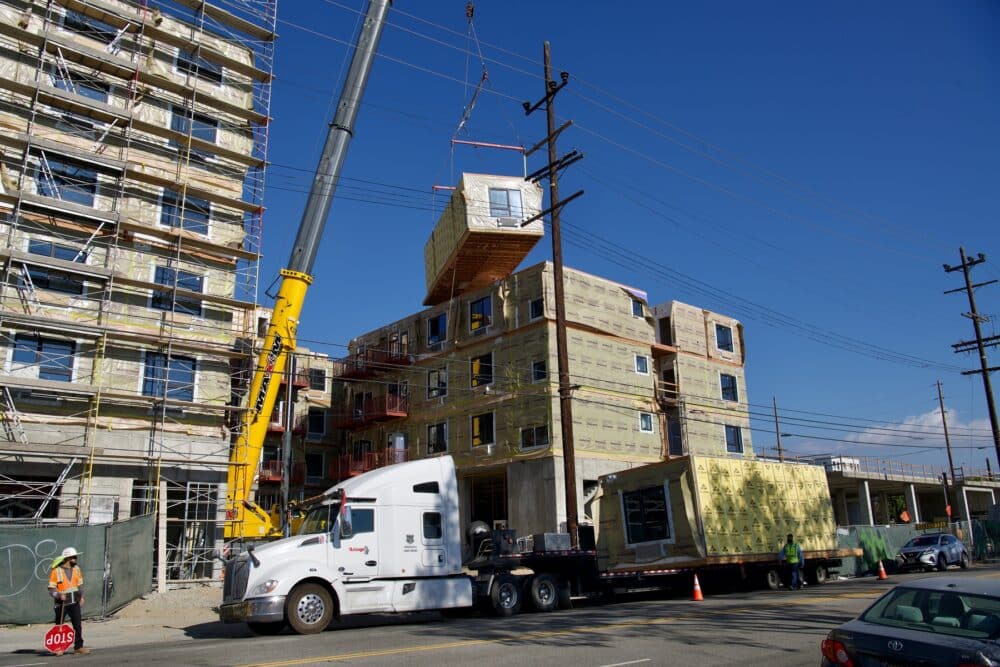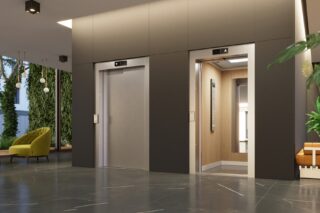In anticipation of the World of Modular event this April, our guest Ioanna Magiati, Partner at AO, dives into how modular design is transforming affordable housing.
This op-ed was written by Ioanna Magiati, Partner, AO.
In California, home values and rents sit higher than anywhere else in the nation, and the state accounts for the largest percentage of homelessness, according to the PPIC. Last year, affordability was at an all-time low, and homelessness rates increased. Despite California’s economic prominence, with the fifth largest gross domestic product (GDP) worldwide, over 186,000 individuals remain unhoused (CalMatters).
This has prompted construction companies to expand their efforts for modular housing as a solution to the crisis. During the World of Modular, these companies often unite under one roof to discuss how innovative designs and construction methodologies can support states in addressing housing needs.
Headquartered in California, we, at AO, have seen the evolution of modular housing and how it can transform affordable housing in the state. Our experience as a leader in modular architecture to develop transformative solutions allows us to deliver high-quality, cost-effective, and timely housing solutions by leveraging cutting-edge modular construction techniques.
READ our article World of Modular 2024: Addressing the US Housing Crisis
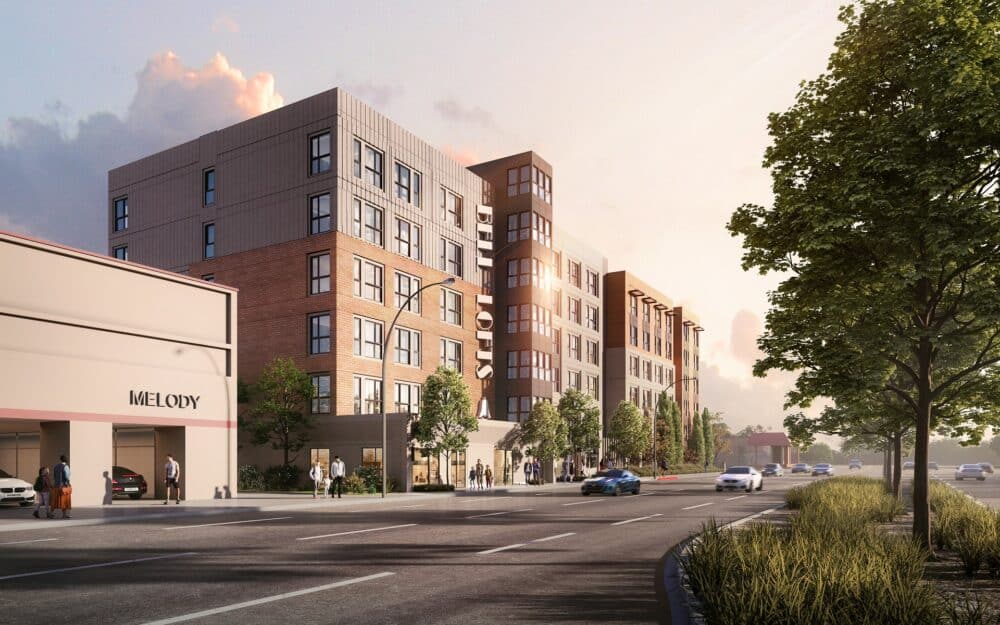
Leveraging Modular Design to Address Affordable Housing
Modular construction represents a paradigm shift in how housing is designed, fabricated, and assembled. AO’s dedicated Modular Studio, established in 2016, has honed a deep expertise and specialized approach to modular design. Our disciplined methodology relies on early collaboration and partnership with manufacturers and consultants, as well as a comprehensive understanding of regulatory requirements to maximize the efficiencies that modular construction can deliver. However, our true strength lies in our ability to orchestrate the entire modular process—ensuring that every piece fits seamlessly into the larger vision.
AO’s in-depth knowledge of modular systems, from design intricacies to construction logistics, enables us to foresee potential challenges and proactively address them, avoiding common pitfalls that less experienced firms might encounter. Our holistic approach integrates prefabrication technologies with advanced digital workflows and factory-controlled precision to streamline construction timelines and optimize project outcomes. With more than 11,000 modular units in the pipeline and 6,500 currently under construction, AO continues to expand the boundaries of modular housing to provide scalable solutions for communities in need.
More than 11,000 modular units in the pipeline and 6,500 currently under construction
Efficiency Through Prefabricated Construction Methods
One of the primary advantages of modular construction is the significant reduction in project timelines, with efficiencies of up to 30% compared to traditional construction methods. By leveraging factory-controlled environments, modular units are produced with unparalleled precision and minimal waste. This method offers improved quality control and reduces the risk of project delays caused by labor shortages and weather-related disruptions.
A prime example is AO’s work on Main Street Apartments in Los Angeles, a 376-unit affordable housing project replacing a former industrial site. The project utilizes a modular design approach to expedite delivery, with unit stacking commencing just ten months after site preparation began—a timeline significantly shorter than the conventional 12- to 24-month construction period (NAHB).
Last week, the final stacking milestone was reached, with all 395 modules completed in just three months, marking a major achievement in efficiency and speed. The accelerated schedule not only enhances project feasibility but also facilitates faster occupancy, providing much-needed housing for essential workers in a transit-oriented community.
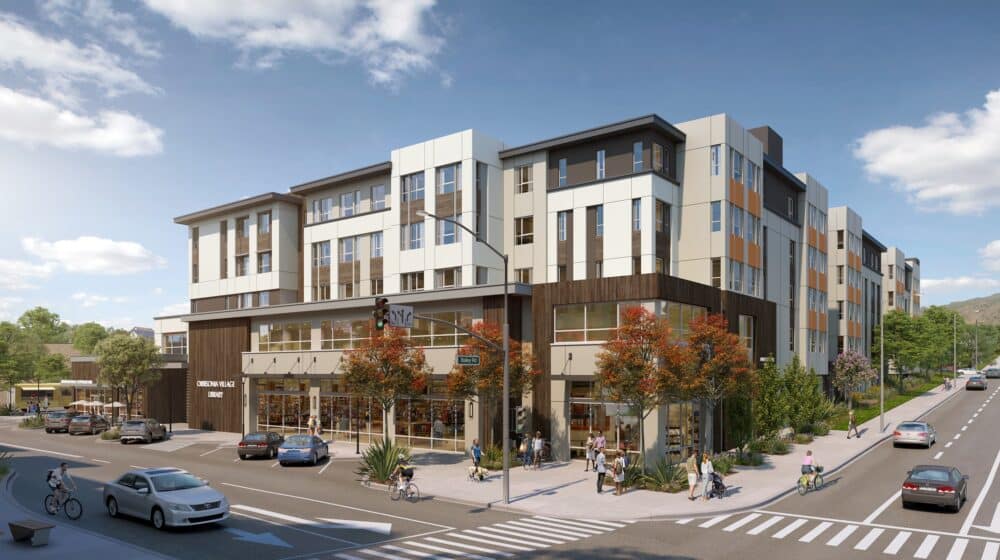
Technological Innovation Driving Modular Excellence
At AO, the integration of cutting-edge technology into modular design is a critical factor in achieving efficiency and consistency. Collaborations with industry-leading modular manufacturers such as Autovol, Plant Prefab, Volumetric Building Companies, and Factory OS ensure the utilization of state-of-the-art fabrication techniques, including:
- Automated Panel Production
- Precision Material Cutting
- Advanced Framing and Sheathing
- Module Production and Finishing
These automated processes not only improve cost predictability but also enhance sustainability by minimizing material waste and reducing the overall carbon footprint of each project.
For instance, The Courtyards on International in the San Francisco Bay Area, AO’s second phase of modular development following Oakland Station Senior Apartments, showcases the firm’s ability to ensure design continuity across multiple phases. Close coordination with modular manufacturers has allowed for seamless integration of sustainable features while maintaining high design standards.
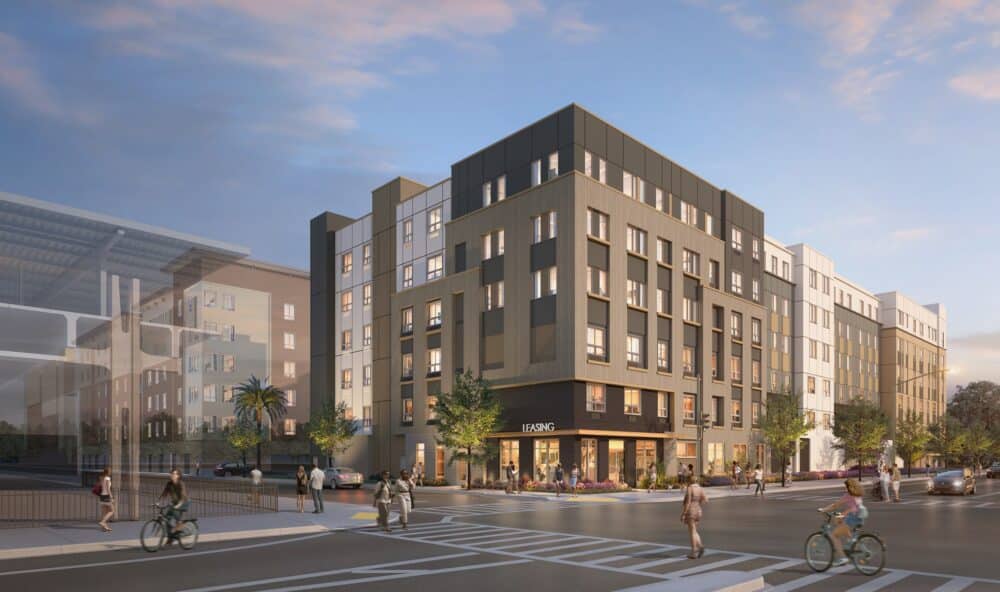
Creating Stronger Communities Through Modular Design
Beyond efficiency and technological innovation, modular construction contributes to fostering stronger, more vibrant communities. AO’s approach to modular housing extends beyond the basic provision of shelter to include thoughtful community-building strategies that prioritize livability and well-being. Modular construction’s cost efficiencies enable developers to allocate resources toward enhancing public spaces, amenities, and social services.
Projects such as El Camino Real in San Bruno exemplify this approach, where AO’s modular design expertise allowed for the inclusion of a 3,000-square-foot raised amenity courtyard featuring playgrounds, seating areas, and green spaces. Similarly, the Orbisonia Heights project in Bay Point integrates a 20,900-square-foot public library, providing residents with invaluable educational and social resources, made possible by cost savings achieved through modular efficiencies. Likewise, La Vista in Hayward embraces this innovative model, incorporating a school at the ground level as part of a larger master-planned development, with stacking already underway.
As California faces unprecedented housing challenges, AO remains committed to pushing the boundaries of modular design to provide innovative, cost-effective, and scalable solutions that address the state’s pressing housing needs. Through a disciplined approach to modular design, AO is not only accelerating project delivery but also enhancing quality, sustainability, and community impact. By embracing modular construction as a catalyst for change, AO continues to redefine the landscape of affordable housing, creating resilient and thriving communities for the future.
